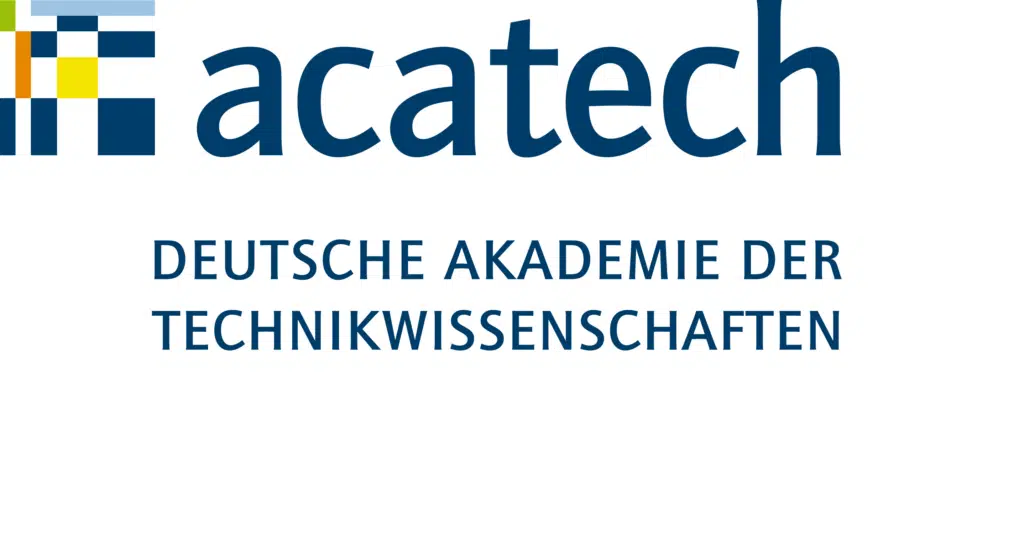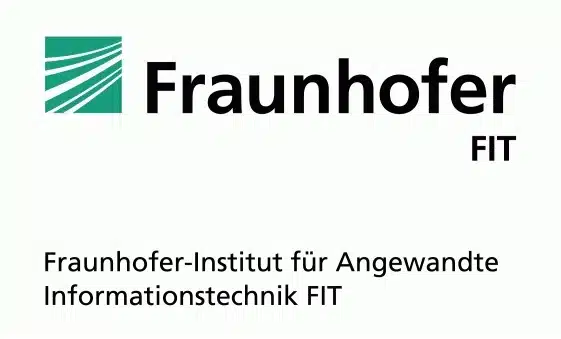Caspar David Friedrich
Today’s Perspective
Be it selfies taken in nature, fantasy world-building games, or press photos of natural disasters, our visual references keep coming back to Friedrich’s iconic paintings, such as The Wanderer above the Sea of Fog, The Grosse Gehege, or The Abbey in the Oakwood. Caspar David Friedrich’s works are world-famous and immensely popular, while being anything but “feel-good” art. For all their captivating beauty, they remain challenging and palpably radical. Bright, almost garish colors meet clear, pared-down compositions. They combine the fantastic and the austere, sadness and hope, subjectivity and universality, precision and openness. Friedrich’s works don’t give answers, they open up spaces for searching questions.

Caspar David Friedrich, The Grosse Gehege Dresden near Dresden, 1831/32, Staatliche Kunstsammlungen Dresden, Albertinum, Galerie Neue Meister, Foto: Jürgen Karpinski

Caspar David Friedrich, Wanderer above the Sea of Fog, c. 1817, Hamburger Kunsthalle, Dauerleihgabe der Stiftung Hamburger Kunstsammlungen, Foto: Christoph Irrgang
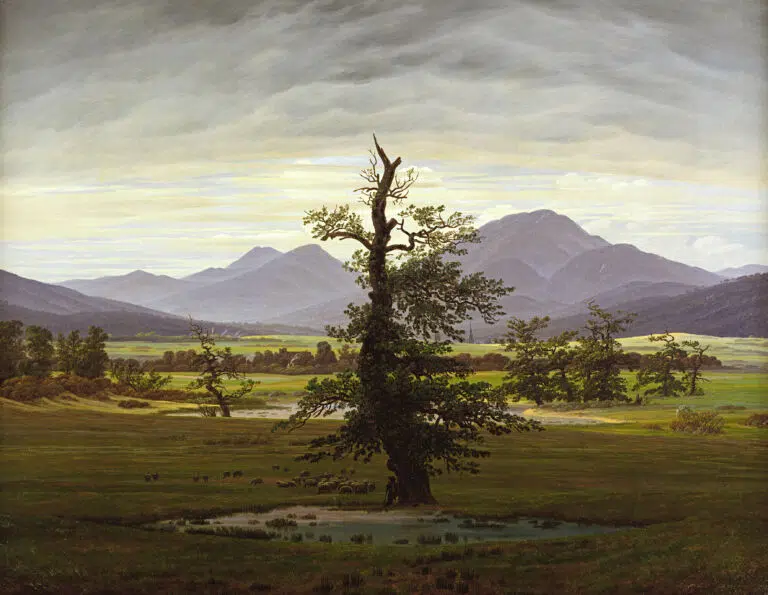
Caspar David Friedrich, The Solitary Tree, 1822, Staatliche Museen zu Berlin, Alte Nationalgalerie, Foto: Jörg P. Anders
The Artist
Caspar David Friedrich was born in Greifswald on September 5, 1774 and later studied at the Royal Danish Academy of Fine Arts in Copenhagen before settling in Dresden. He challenged academic tradition by seeking his own sources of inspiration, which he found in nature, often on walks in the scenic countryside around Dresden. And it was in Dresden that Friedrich started a family. He enjoyed a period of great success and then saw his art fall out of favor. More than half a century after his death in 1840, he was rediscovered at the 1906 German Centenary Art Exhibition in Berlin and was celebrated as a pioneer of modern art. His popularity continues to this day, perhaps because there is something profoundly moving in his art about humankind’s relationship to the natural world and the concept of nature.
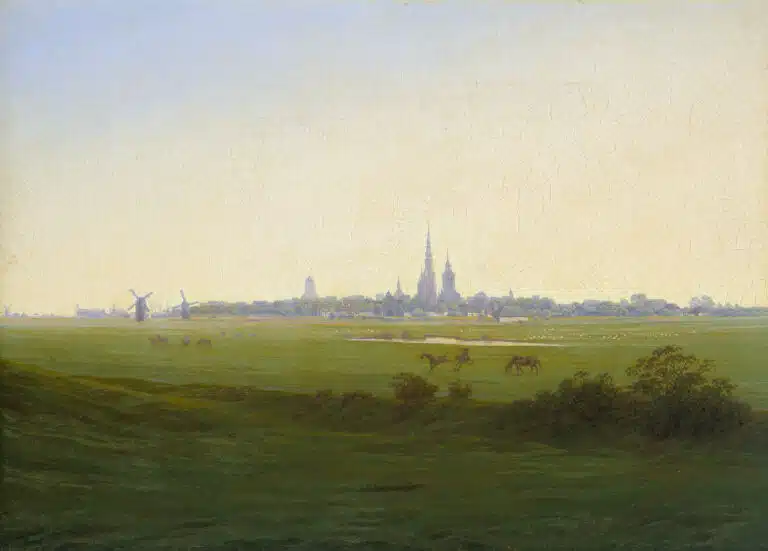
Caspar David Friedrich, Meadows near Greifswald, 1821/22, Hamburger Kunsthalle
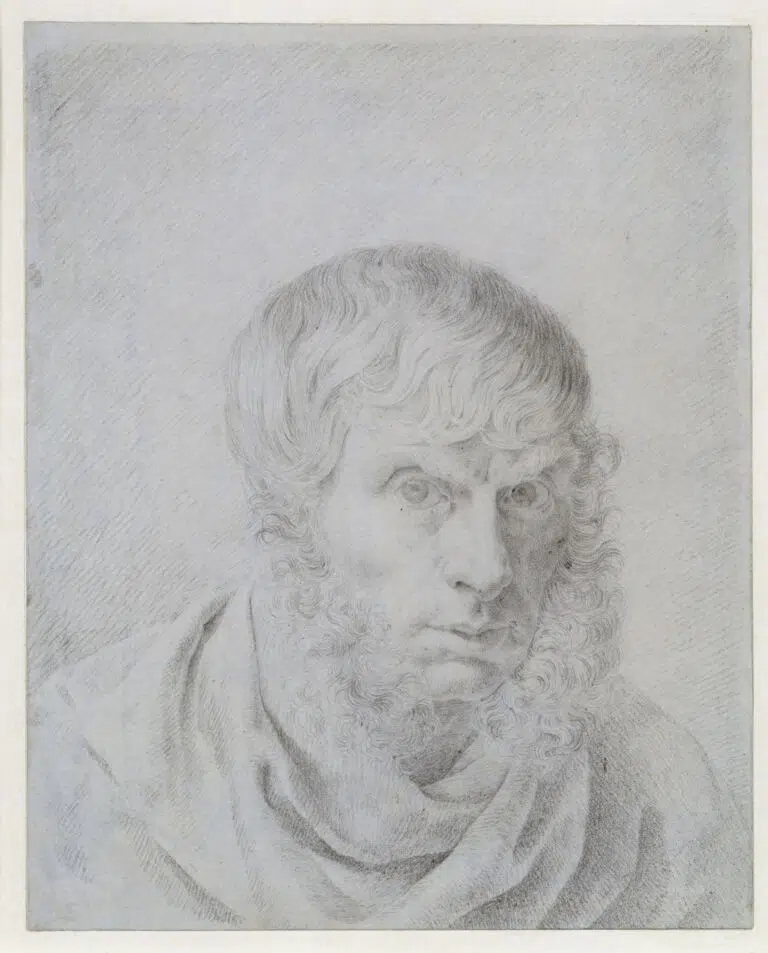
Caspar David Friedrich, Self-Portrait, c. 1810, Staatliche Museen zu Berlin, Kupferstichkabinett
The Anniversary
To celebrate the 250th anniversary of Caspar David Friedrich’s birth, the three museums or museum associations with the most comprehensive collections of his works have joined forces: the Hamburger Kunsthalle, the Alte Nationalgalerie, and the Staatliche Kunstsammlungen Dresden.
The three anniversary exhibitions fall under the patronage of German President Frank-Walter Steinmeier. Extensive reciprocal loans have enabled the three partners to offer unique presentations shedding light on different aspects of his work.
In addition to the initiatives of the Hamburger Kunsthalle, other national and international events are taking place to commemorate the artist’s anniversary. His birthplace, Greifswald, is celebrating his legacy with a year-long program, the Klassik Stiftung Weimar is illuminating the relationship between Friedrich and Goethe in an exhibition, and the Metropolitan Museum of Art in New York is dedicating the first retrospective in the United States to Friedrich, starting in Febuary 2025.
The Web Portal
It is impossible to collect all of Caspar David Friedrich’s major paintings and drawings from Hamburg, Berlin, and Dresden in one physical space. Some of the paintings are too fragile to transport, and his drawings are rarely exhibited because they are too sensitive to light. These works can only be brought together digitally.
The Caspar David Friedrich web portal is an online resource that complements the three anniversary exhibitions in Hamburg, Berlin, and Dresden. It creates a digital experience free from conservation concerns by combining paintings and drawings from the collections with additional information and multimedia content. In addition to images of the paintings, this includes so-called metadata, which includes information such as the date of creation, dimensions, or the technique used by Friedrich. During the preparation of the three exhibitions, the partners in Hamburg, Berlin, and Dresden will add further content, such as texts or audio files on Friedrich’s major works and additional multimedia content, from gigapixel images made in technical analysis and conservation science. The survey of his art will be supplemented by selected works from other museums. In this way, this digital platform forms a panorama of his work, complemented by various expert perspectives on his art and legacy.
The Chronicle
Arranged in chronological order, the Chronicle provides an overview of about 250 selected paintings and drawings by Friedrich and invites the viewer to delve deeper into the wider historical events of his day and age. You’ll find important moments in Friedrich’s biography, quotations, and information on contemporary events at the click of a button. You can assemble your own path through more than 500 events, works, and statements, and go from skimming through highlights to delving into content at a more granular, in-depth level.
The digital presentation of the Chronicle focuses on Friedrich’s lifetime from 1774 to 1840. For the anniversary in 2024, it will be expanded to include select examples of how his art was received in the decades and centuries after his death.
Game & Specials
The Great Sneeze – Rescue the Exhibition! is a narrative point & click game for art enthusiasts aged 8 and up and was developed by Studio Monstrum using data from the museums in Dresden, Berlin and Hamburg: The use case shows the potential of data from the Culture Data Space for innovative offerings by the creative industries.
Zooming in to the finest brushstroke: for the ZOOM IN format, photographer Christoph Irrgang created a so-called gigapixel image of the painting The Sea of Ice. He digitally merged 36 individual photos to create an overall image with a width of around 60,000 pixels – an image that goes far beyond mere reproduction. The webpage also links to multimedia content such as a Deutsche Grammophon playlist for the Friedrich anniversary, virtual tours and videos of the anniversary exhibitions.
Digital Stories
Without the constraints of time and place, the digital possibilities of the Chronicle allow the viewer to gain a comprehensive overview of Friedrich’s work and times. The Digital Stories, on the other hand, allow immersion in the details and backgrounds of selected works: each Digital Story is dedicated to one painting and raises historical and contemporary questions and theories directly addressed to the user.
Culture Data Space
The web portal for the 250th anniversary of Caspar David Friedrich’s birth was developed as a ‘use case’ for Smart Museum Services within the project Culture Data Space. Culture Data Space is a joint venture of acatech/Deutsche Akademie der Technikwissenschaften, Behörde für Kultur und Medien der Freien and Hansestadt Hamburg, the Fraunhofer-Institut für Angewandte Informationstechnik FIT, and other application-specific partners.
Culture Data Space is one of 18 flagship projects of the German government’s national Digital Strategy and is funded by the Federal Government Commissioner for Culture and the Media. Its purpose is to facilitate the digital networking of cultural institutions and the effortless exchange of culture-related data. The aim is to establish an independent platform for digital products and digital resources for the cultural sphere. Datenraum Kultur is characterized by the simplification of access to and use of data. Its guiding principle is to preserve the sovereignty of data owners, content creators, and service providers in the cultural, media, and creative industries.
In the future, the Culture Data Space should make it easier to create offerings comparable to the web portal on Caspar David Friedrich. In the course of the work on the web portal, important requirements and initial prototypes were and are being identified and described, which serve as a basis for developing processes and standards for the Culture Data Space.

